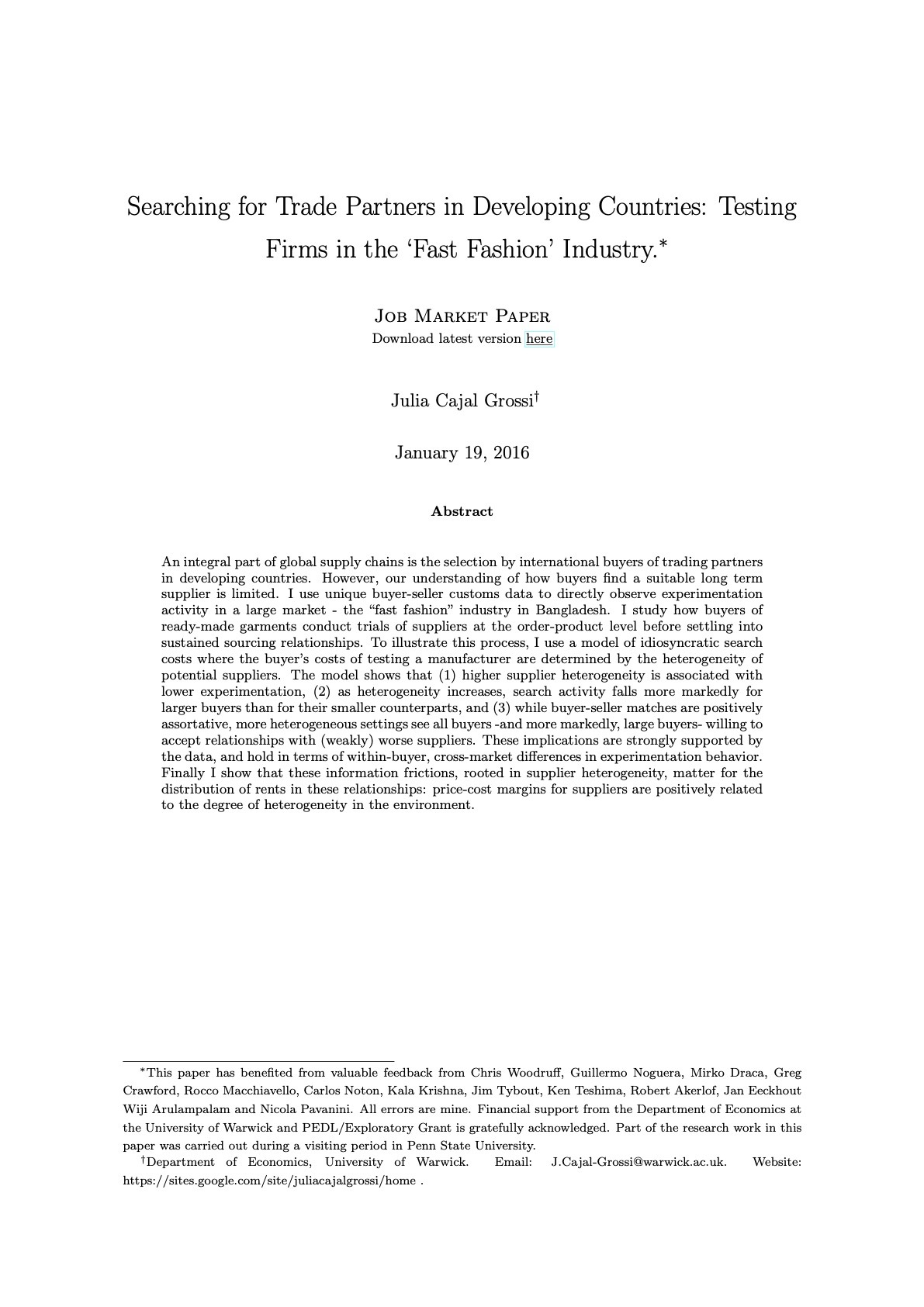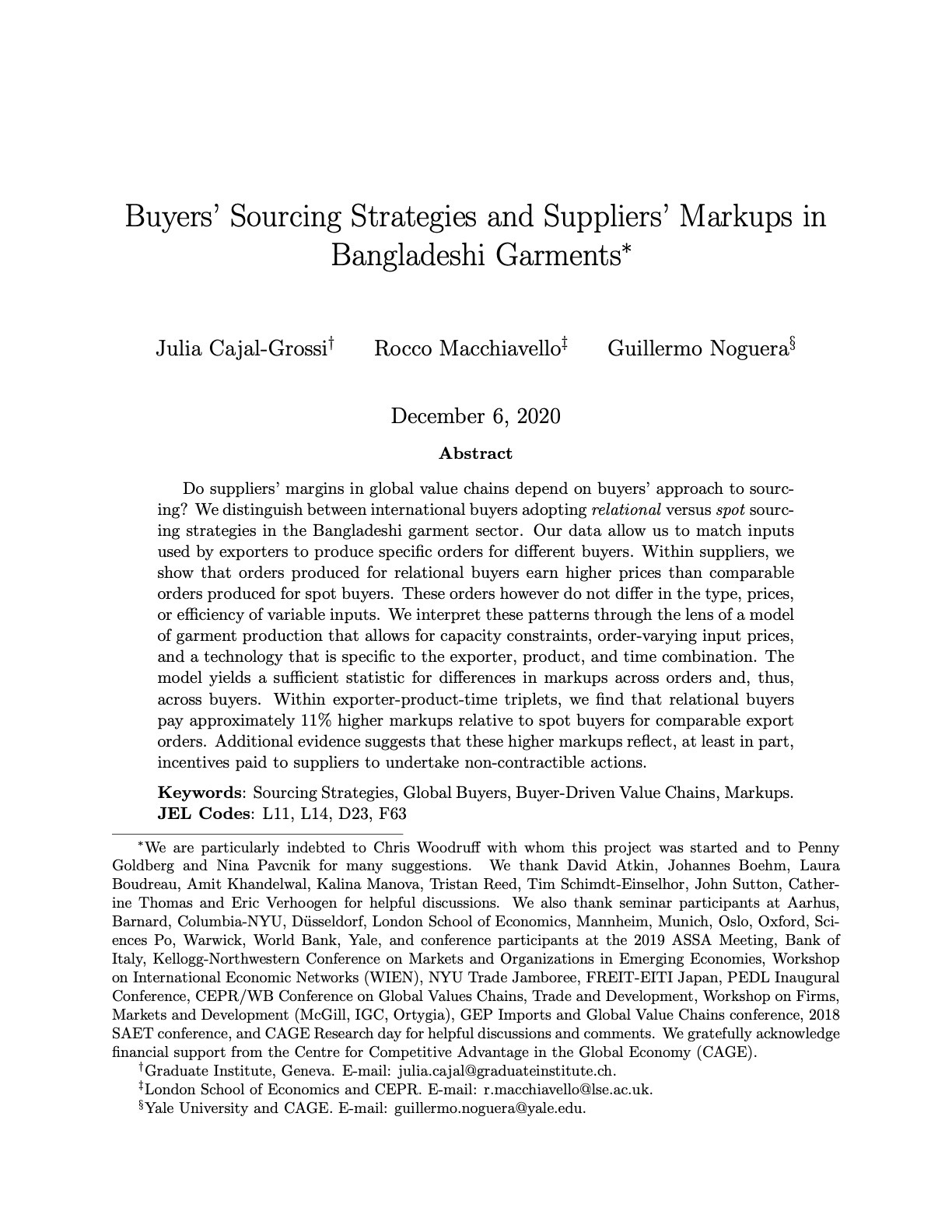︎

Julia Cajal Grossi
The Graduate Institute of International and Development Studies Geneva (IHEID)
Julia Cajal Grossi is an Assistant Professor in the Department of Economics at the Graduate Institute (IHEID). She holds a PhD from University of Warwick and was awarded the Robert Solow Postdoctoral Fellowship by the Cournot Center. She is an empirical microeconomist and her research focuses on development, trade and industrial organisation. Her current work studies buyer-seller relationships in international trade.
MORE ABOUT JULIA CAJAL GROSSI >Jan 1, 2021
Searching for Trade Partners in Developing Countries
An integral part of global supply chains is the selection by international buyers of trading partners in developing countries. However, our understanding of how buyers find a suitable long term supplier is limited. I use unique buyer-seller customs data to directly observe experimentation activity i...

Jan 1, 2021
Cajal-Grossi, J, Macchiavello, R, Noguera, G.
Buyers’ Sourcing Strategies and Suppliers’ Markups in Bangladeshi Garments
Do suppliers' margins in global value chains depend on buyers' approach to sourcing? We distinguish between international buyers adopting relational versus spot sourcing strategies in the Bangladeshi garment sector. Our data allow us to match inputs used by exporters to produce specific or...

